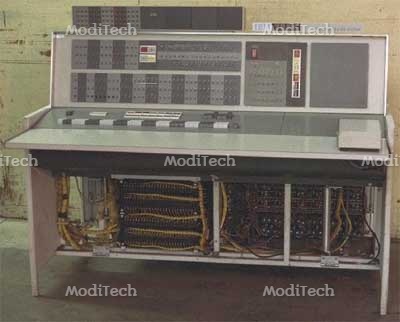Five Generations of Computer
The evolution of the computer began with the human's need to count, the actual growth of this field happened in a short span of thirty years. This rapid development was characterized by phases of growth, which have come to be called computer generations. Major technological developments in each generation led to smaller, cheaper, more powerful and more efficient, and reliable computers.
Following are the Five Generations of Computers :
♢ First Generation (1940-1956): Vacuum Tubes/Value
The first generation computers used valves leading to huge size and cost. A vacuum tube is used as a processor and a magnetic drum as a storage device. These computers are used around 18000 vacuum tubes for processing and also very costly, require more electricity to operate. It also comes in a big size that covers a large area requires more space. Thesecomputerscan perform only one task at a single time. The punched card is used for input data into the computer, process, and provides an output on the printout. The UNIVAC is the first commercial computer purchased by the US Census Bureau in 1951. this computer depended on Machine Language (0,1). It is the most basic common programming language. The UNIVAC was the first commercial computer delivered to a business client, the U.S. Census Bureau in 1951.

Few Examples are:
ENIAC (Electronic Numerical Integrator and Computer).
EDVAC (Electronic Discrete Variable Automatic Computer).
UNIVAC (Universal Automatic Computer).
IBM-701.
IBM-650.
♢ Second Generation (1956-1963): Transistors
The second-generation computer used transistors. In a span of ten years, transistors that were more efficient and cheaper replaced valves. The computer of the Second Generation is in less size than the first generation of computer. Thesecomputersused transistors as processors and magnetic cores as a storage devices. These computers are faster than the previous generation. In this generation, computers are used transistors instead of a vacuum tubes that are more powerful and reliable. It uses a circuit board filled with a transistor and magnetic core. Transistor was invented by William Shockley John Bardeen, and Walter Houser Brattain at bell labs in 1947,23 Dec. In these computer Assembly languages and other programming languages are used such as Cobol, Fortran.

Few Examples are:
Honeywell 400
IBM 7094
CDC 1604
CDC 3600
UNIVAC 1108
♢ Third Generation (1964-1970): Integrated Circuits (IC)
The third generation computers replaced transistors with Integrated Circuits (IC). Computers were developed using IC technology. In the early sixties, a breakthrough was achieved when hundreds of transistors could be placed on a single silicon chip. This IC became the basis of the third generation. An IC, In these computers, leads to faster speed, efficiency than a previous-generation computer and also consumes less power and generates less heat. This generation started the use of a device such as a keyboard, mouse, and operating system interface. It allows running different tasks at the same time. Thesecomputersare smaller in size, cheaper in price, and reliable than the previous generations.

Few Examples are:
PDP-8
PDP-11
ICL 2900
IBM 360
IBM 370
♢ Fourth Generation (1971-Present): Microprocessor
The fourth-generation computers are developed using Microprocessors. It is faster, reliable, and reduced production costs as compared to previous generation computers. These computers are portable, we can move from one place to another place. With the introduction of Very Large Scale Integration (VLSI), thousands of transistors could be placed on a single chip. Intel released the first microprocessor called "Intel-4004" and become the world first company who developed microprocessor. In 1981 IBM introduced its first computer for the home user, and Apple introduced the Macintosh in 1984. Fourth-generation computers also saw the development of Graphical User Interfaces (GUIs), themouse, and handheld devices.

Few Examples are:
IBM 4341
DEC 10.
STAR 1000.
PUP 11.
♢ Fifth Generation- Present and Beyond: Artificial Intelligence
The Fifth Generation replaced VLSI technology with SLSI (Super Large Scale Integration). The computers in this generation are more reliable, faster, and come with a large storage capacity. They use AI (Artificial Intelligence) technology and Parallel technology to put human intelligence into a machine and the development of thesecomputersis still in its infancy. Example:- Speech Recognition, Voice Recognition, Expert Systems, and Robots, etc.

Few Examples are:
Desktop.
Laptop.
NoteBook.
UltraBook.
Chromebook.
You might like this :-
○ Operating System
○Types of computer
○Computer Software
○Input Device